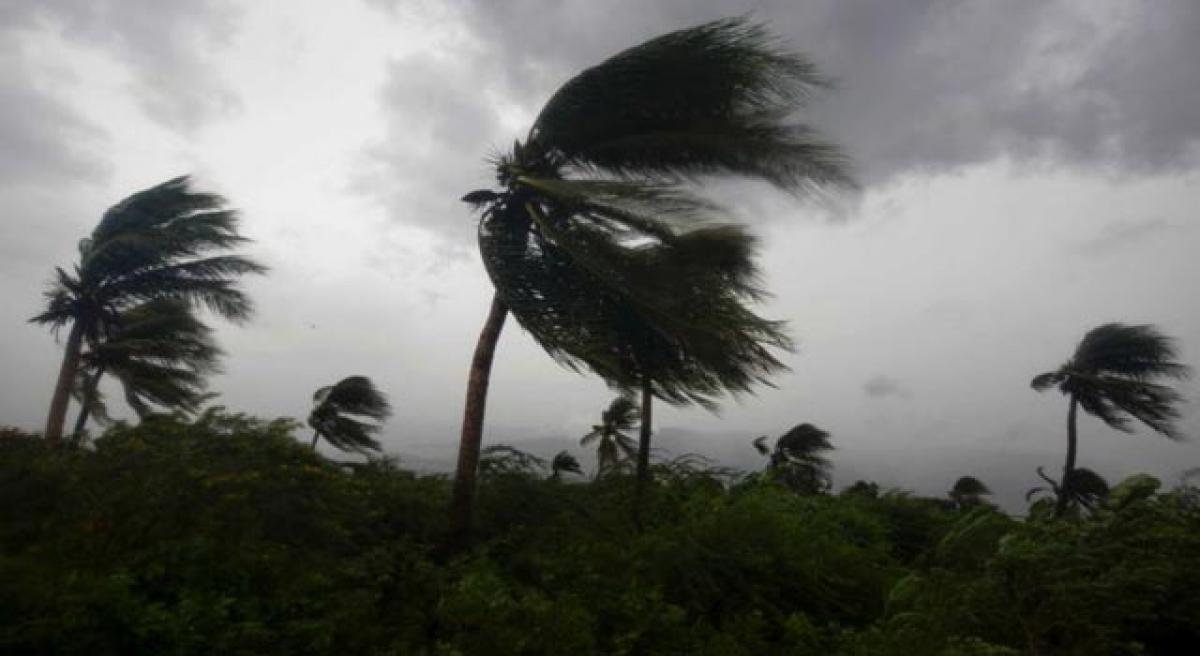Live
- First Star Outside Milky Way Captured: WOH G64 is 2,000 Times Larger Than the Sun
- Sikkim govt to constitute state Niti Ayog: CM Tamang
- CBI books Rajasthan narcotics inspector for Rs 3 lakh bribe
- Rajasthan bypolls: A tough contest between BJP and Congress
- Albania joins SEPA, paving way for EU integration
- Japanese government approves 250-billion USD economic package to ease price pain
- Six pharma companies to set up their units in Telangana
- The Unstable Events of a 17-Wicket Day in Perth: India vs Australia
- Dutch FM's Israel trip cancelled after Netanyahu's arrest warrant
- UK to increase energy price cap by 1.2 per cent
Just In

Hurricane Matthew, the fiercest Caribbean storm in nearly a decade, slammed into the Bahamas on Thursday and intensified as it barrelled toward the southeastern United States after killing at least 69 people, including 65 in struggling Haiti, on its northward march.
Hurricane Matthew, the fiercest Caribbean storm in nearly a decade, slammed into the Bahamas on Thursday and intensified as it barrelled toward the southeastern United States after killing at least 69 people, including 65 in struggling Haiti, on its northward march. Matthew is predicted to strengthen from a Category 3 to 4 storms en route to Florida's Atlantic coast, making landfall there on Thursday night, the US National Hurricane Center said.
Meteorologists rely on the Saffir-Simpson Hurricane Wind Scale to help us understand the magnitude of the hurricane’s impact. This 1-to 5-categorization scale does not address the potential for other hurricane-related impacts, such as storm surge, rainfall-induced floods, and tornadoes, but it does help residents (and disaster organizations) gauge the safety measures that must to be taken to prepare before a hurricane makes landfall. Use this breakdown to help you understand what's at stake.
Category 1: Winds range from 74 to 95 mph and can be expected to produce some minor damage to property. Injuries to people and animals are generally isolated and limited to flying or falling debris.
Category 2: Winds range from 96 to 110 mph and can be expected to produce extensive property damage. Greater wind velocities mean that debris poses a greater threat to humans and animals, while the roofing, siding, and glass windows (protected and unprotected) of frame homes are more vulnerable to damage.
Category 3: Winds ranging from 111 to 130 mph cause significant damage to property, humans, and animals. Mobile and poorly constructed frame homes are often destroyed, and even well-built frame homes commonly sustain major damage. Category 3 storms can also cause extensive inland flooding. Electricity and water are commonly unavailable for several days to several weeks after the storm.
Category 4: Winds range from 131 to 155 mph and can cause catastrophic damage to property, humans, and animals. Severe structural damage to frame homes, apartments, and shopping centers should be expected.
Category 5: Winds at or greater than 155 mph cause catastrophic damage to property, humans, and animals (read: you should be nowhere near this storm!). Complete or almost-complete destruction of mobile homes, frame homes, apartments, and shopping centers should be expected, and nearly all trees in the area will be snapped or uprooted. Power outages can last for weeks and possibly months, according to coastalliving.com.

© 2024 Hyderabad Media House Limited/The Hans India. All rights reserved. Powered by hocalwire.com







